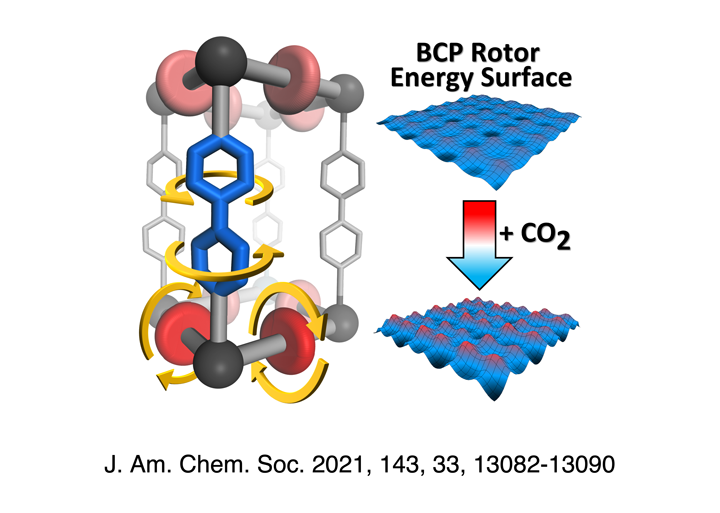J. Perego, C. Bezuidenhout, S. Bracco, G. Prando, L. Marchio, M. Negroni, P. Carretta, P. Sozzani, A. Comotti
J. Am. Chem. Soc. 2021, 143, 33, 13082-13090
Abstract
Achieving sophisticated juxtaposition of geared molecular rotors with negligible energy-requirements in solids enables fast yet controllable and correlated rotary motion to construct switches and motors. Our endeavor was to realize multiple rotors operating in a MOF architecture capable of supporting fast motional regimes, even at extremely cold temperatures. Two distinct ligands, 4,4′-bipyridine (bipy) and bicyclo[1.1.1]pentanedicarboxylate (BCP), coordinated to Zn clusters fabricated a pillar-and-layer 3D array of orthogonal rotors. Variable temperature XRD, 2H solid-echo, and 1H T1 relaxation NMR, collected down to a temperature of 2 K revealed the hyperfast mobility of BCP and an unprecedented cascade mechanism modulated by distinct energy barriers starting from values as low as 100 J mol–1 (24 cal mol–1), a real benchmark for complex arrays of rotors. These rotors explored multiple configurations of conrotary and disrotary relationships, switched on and off by thermal energy, a scenario supported by DFT modeling. Furthermore, the collective bipy-ring rotation was concerted with the framework, which underwent controllable swinging between two arrangements in a dynamical structure. A second way to manipulate rotors by external stimuli was the use of CO2, which diffused through the open pores, dramatically changing the global rotation mechanism. Collectively, the intriguing gymnastics of multiple rotors, devised cooperatively and integrated into the same framework, gave the opportunity to engineer hypermobile rotors (107 Hz at 4 K) in machine-like double ligand MOF crystals.

